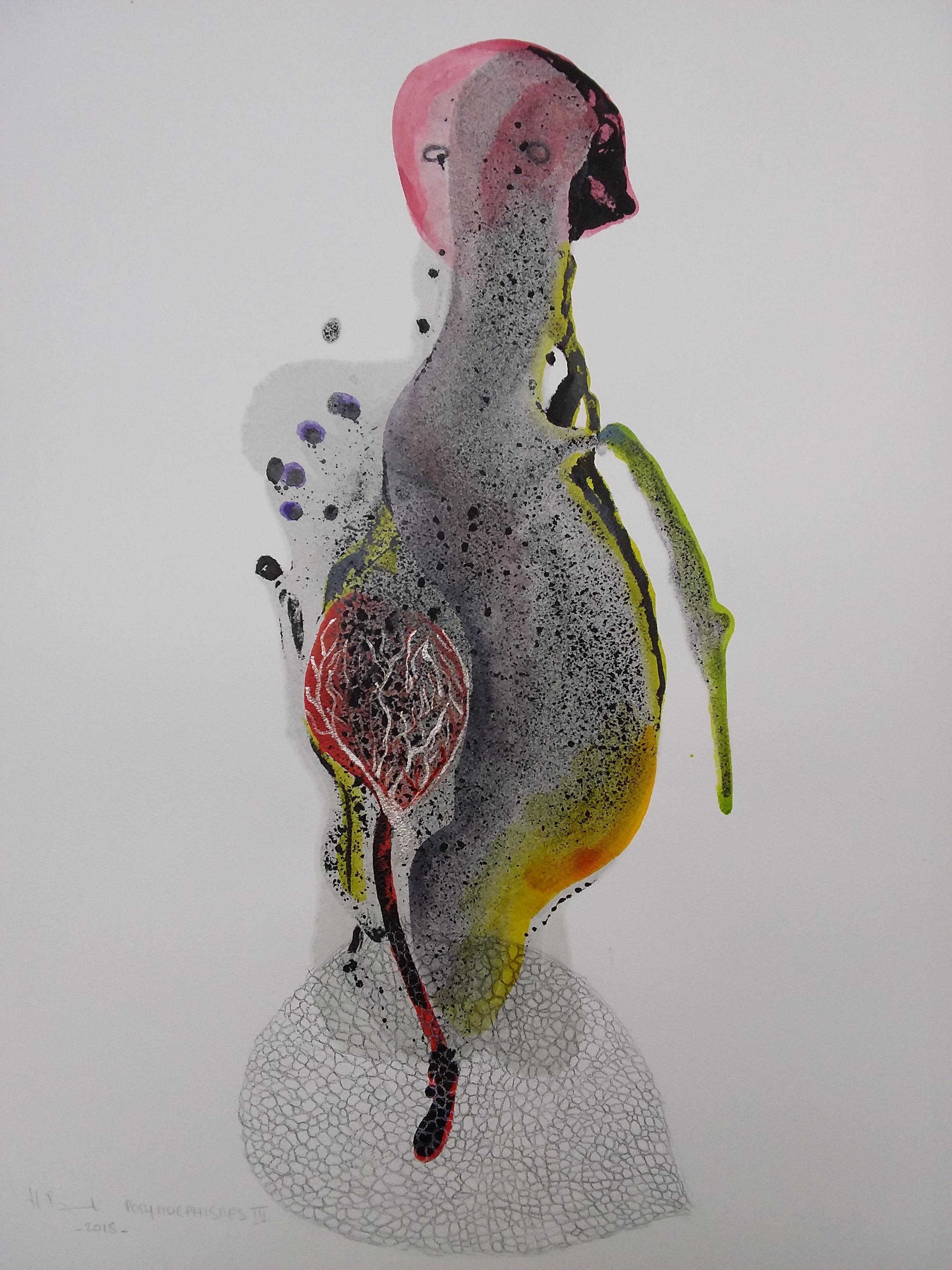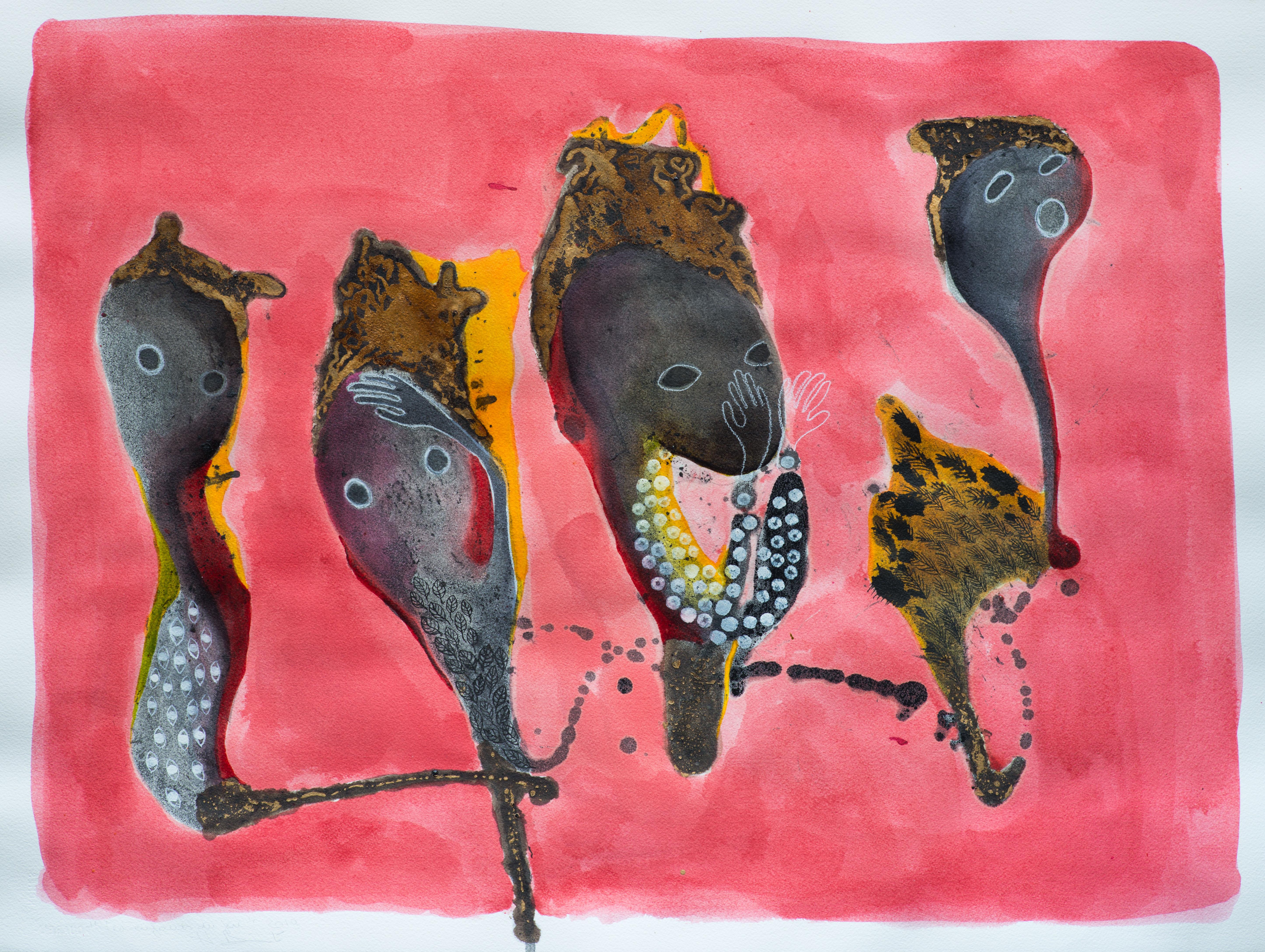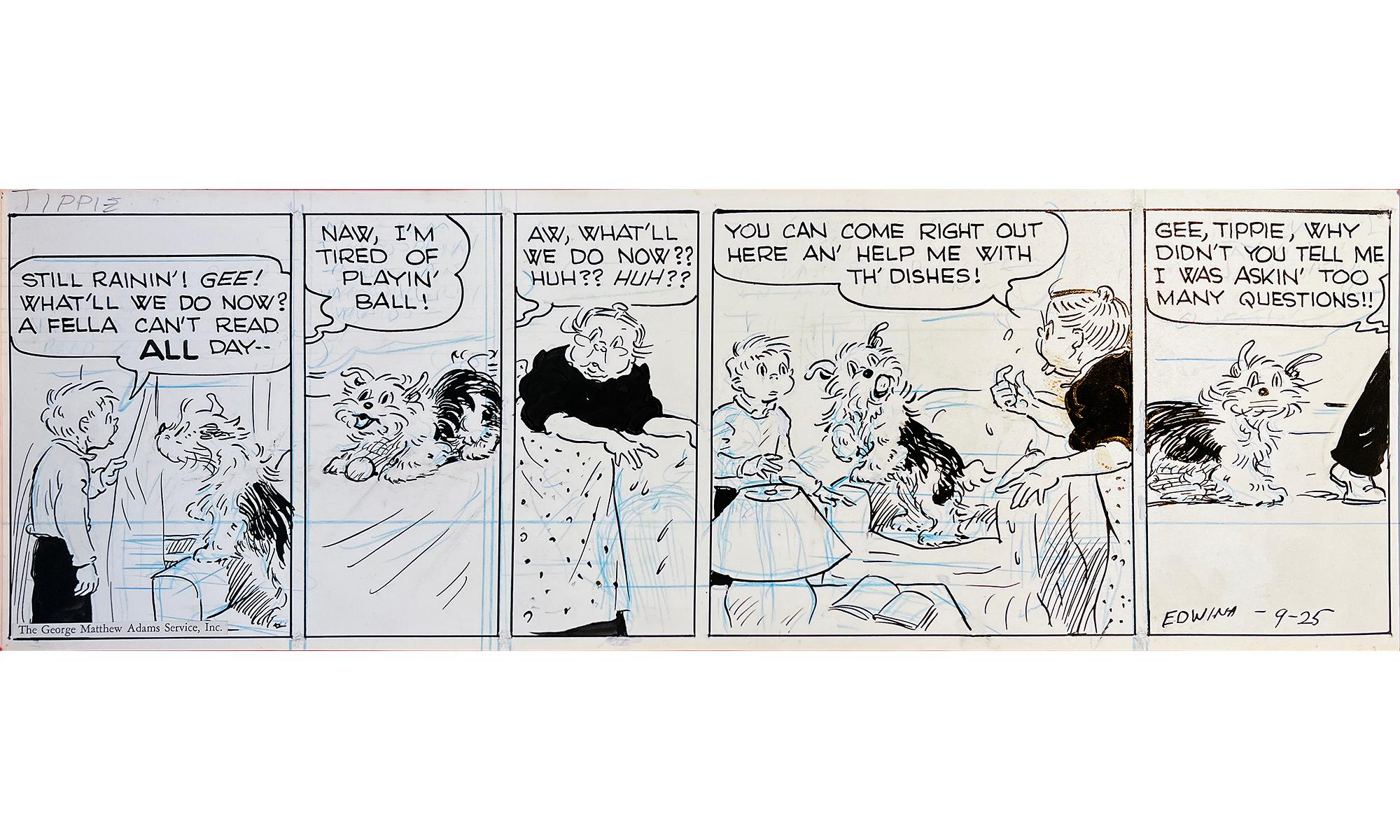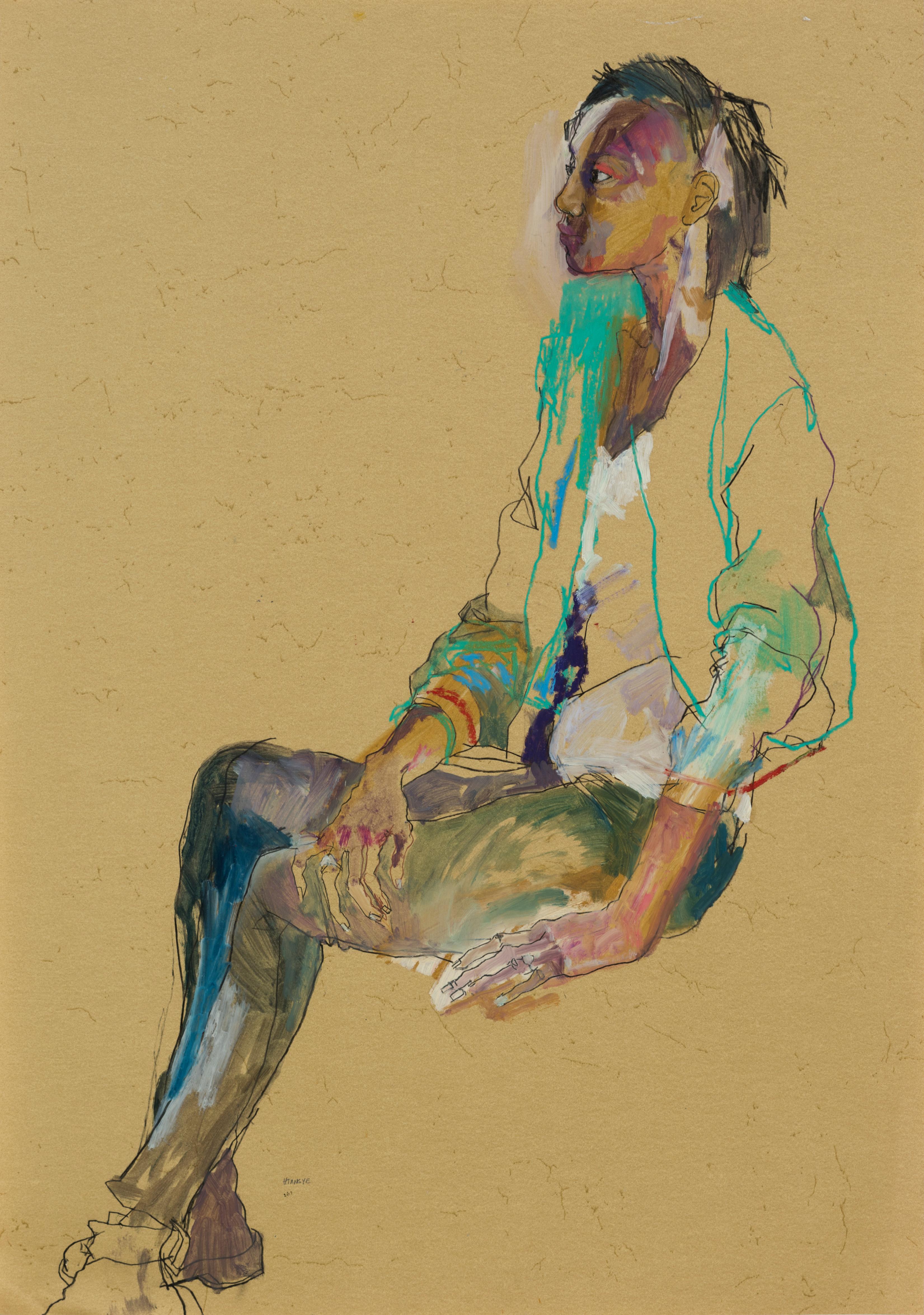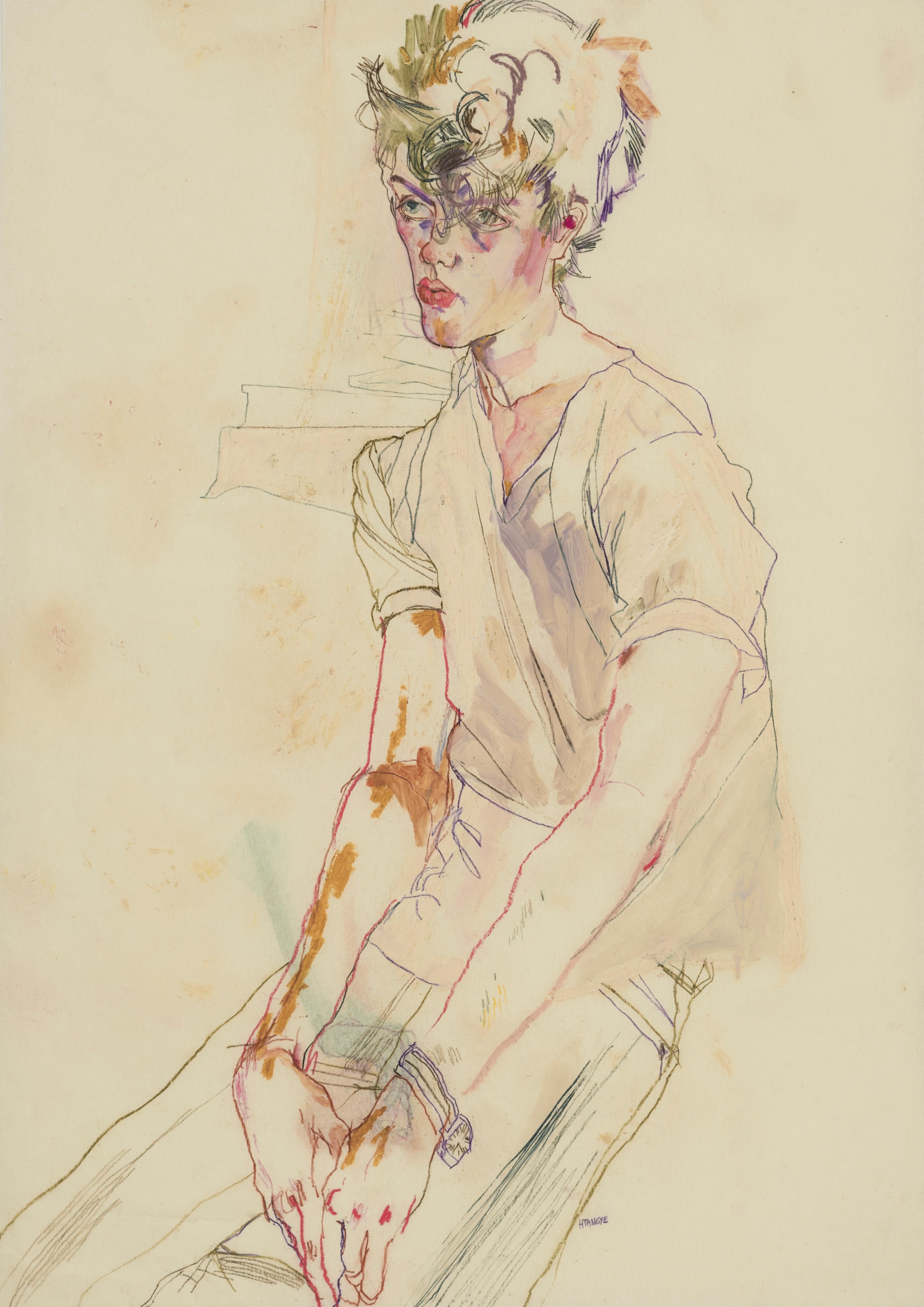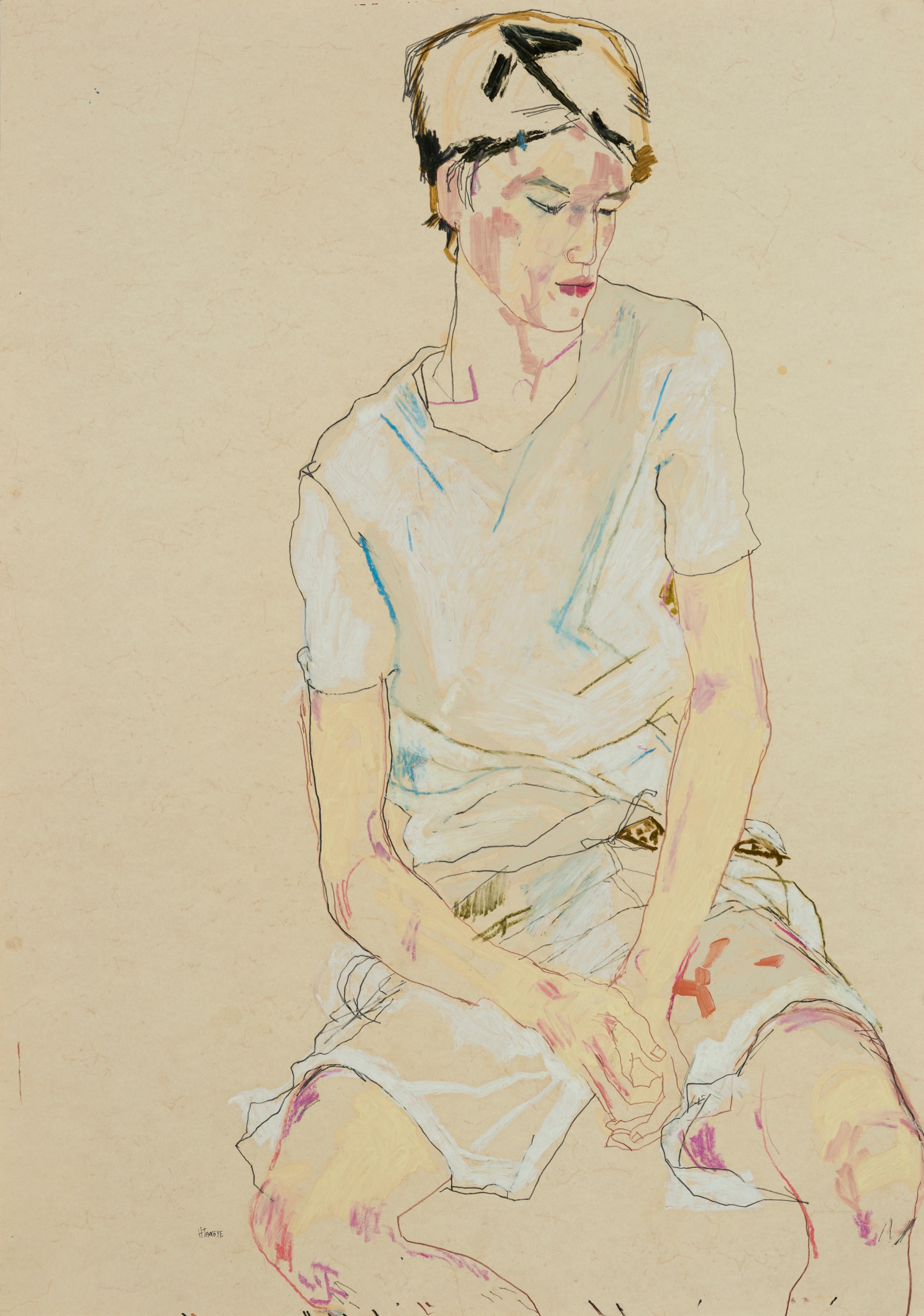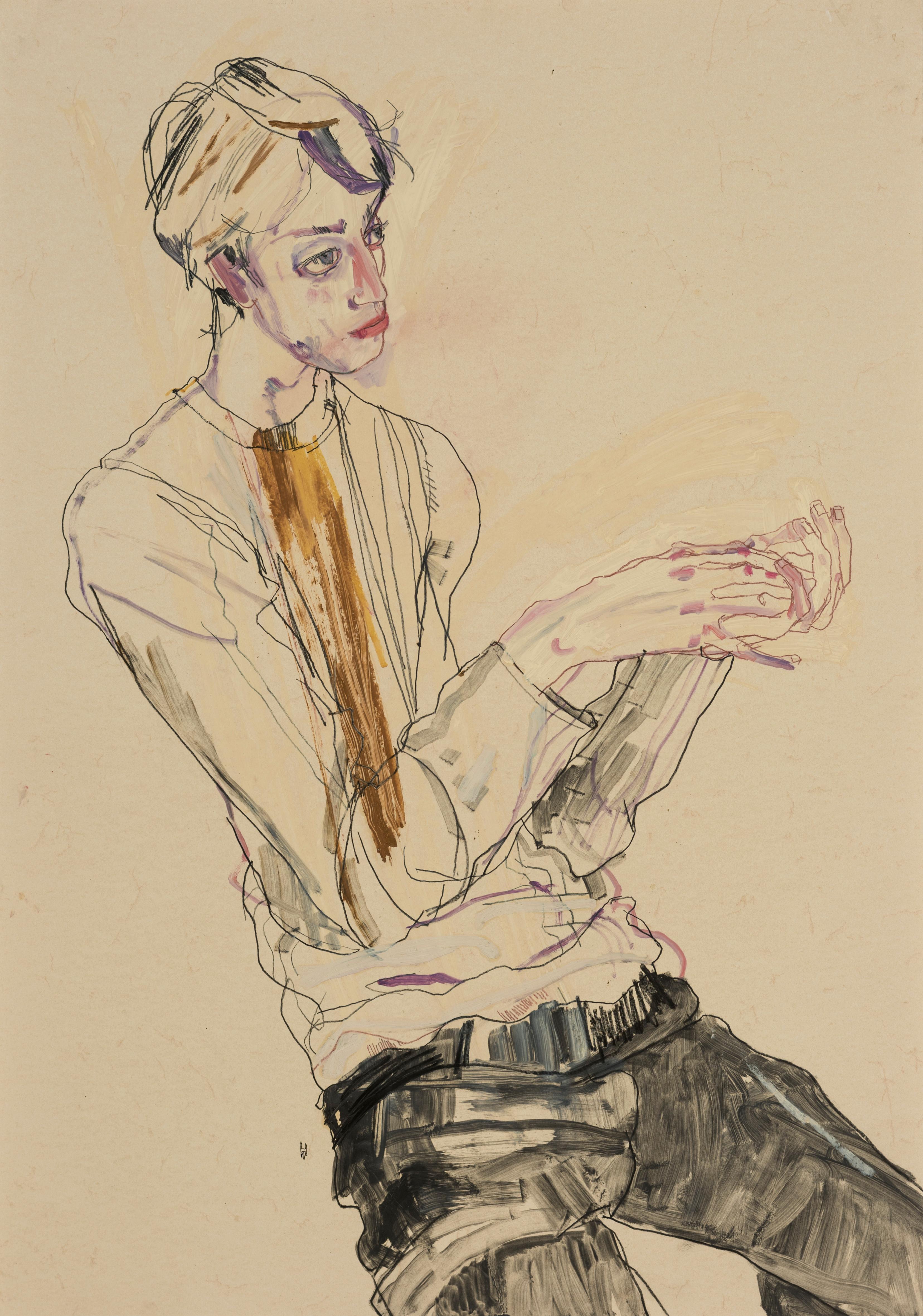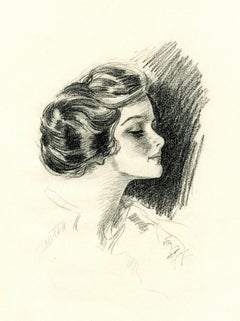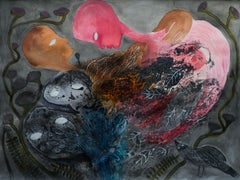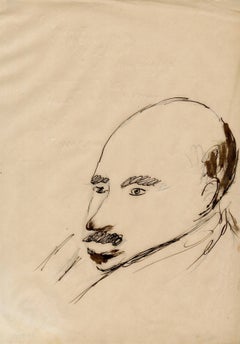
John Maynard Keynes
View Similar Items
Want more images or videos?
Request additional images or videos from the seller
1 of 2
Duncan GrantJohn Maynard Keynes1923
1923
About the Item
About the Seller
5.0
Recognized Seller
These prestigious sellers are industry leaders and represent the highest echelon for item quality and design.
Platinum Seller
These expertly vetted sellers are 1stDibs' most experienced sellers and are rated highest by our customers.
Established in 1978
1stDibs seller since 2013
Typical response time: 1 hour
Associations
International Fine Print Dealers Association
More From This SellerView All
- Modele au Chapeau or Child with a Large HatLocated in Fairlawn, OHSigned with the estate stamp initials lower right, Lugt 388a (see photo) Provenance: Richard Norton Gallery, Chicago (label verso) Fairweather-Hardin Gallery, Chicago (label verso) ...Category
1880s Impressionist Portrait Drawings and Watercolors
MaterialsGraphite
- Young Lady in ProfileBy Harrison M. FisherLocated in Fairlawn, OHYoung Lady in Profile (Dorothy Gibson) Graphite on paper, c. 1915 Signed lower right (see photo). The sitter for this drawing, along with a huge number of Harrison Fisher’s works, is the model, turned actress, Miss Dorothy Winifred Gibson (1889-1946). She was one of the lucky ones who survived the sinking of the Titanic in 1912. There is an in depth biographical sketch available on Wiki. "Dorothy Winifred Gibson (1889-1946) is arguably one of the most fascinating women of the twentieth century. Her story is more than deserving of its own film or TV show and yet, if it was to ever appear on the screen, it would be in serious danger of being criticised as ‘too unbelievable’ or ‘farfetched’. But believe me, readers, everything I am about to tell you about Dorothy Gibson is true... Early Life Dorothy Winifred Gibson (originally Dorothy Winifred Brown, before her father died when she was three years old and her mother remarried), was born in New Jersey on 17 May 1889. Between 1906 and 1911 (aged 17-22), she appeared on stage as a singer and dancer in a number of theatre and vaudeville productions, and in 1909 she began modelling for Harrison Fisher, a famous commercial artist. Dorothy soon became Fisher’s favourite muse, and her image was seen regularly on postcards, merchandising products and even on the covers of magazines like Cosmopolitan. During this time, Dorothy met and married a pharmacist named George Henry Battier Jr, but the couple soon separated and were divorced by 1913. As early as 1911, Dorothy began appearing in movies, starting out as an extra but soon taking the leading roles in a series of films by Éclair Studios. Praised for her natural acting style and comedic flair, she was a huge hit – and arguably the first actress to be promoted as a star in her own right. Surviving the sinking of the RMS Titanic On 17 March 1912, after starring in a string of movies, Dorothy and her mother, Pauline, took a trip to Europe – but after a few weeks Dorothy was called back to America by the studio to start working on a new series of films. Dorothy and her mother were in Paris when they booked their tickets on the maiden voyage of the RMS Titanic, and boarded at Cherbourg on 10th April. On the night the ship sank, Dorothy had ‘spent a pleasant Sunday evening playing bridge with a couple of friendly New York bankers’ (her words, in an interview with the New York Dramatic Mirror). Despite the request of a steward for them to finish, they carried on with their game and it was not until about 11:40pm that Dorothy returned to the stateroom she shared with her mother. It was at that point that she felt ‘a long drawn, sickening crunch’ and, while not exactly alarmed, she decided nonetheless to investigate. Quickly noticing that the deck was ‘lopsided’, she rushed back to her room to fetch her mother, and the pair returned to the boat deck. Dorothy and her mother escaped from the ship on the first lifeboat launched (number 7), and given how quiet it was on the boat deck at the time, she asked her bridge partners to join them. However, events took a turn for the worst when a hole was found in the bottom of the lifeboat, causing icy cold water to rush in and almost flood the boat. Luckily, though, Dorothy explained, ‘this was remedied by volunteer contributions from the lingerie of the women and the garments of men.’ It is hard for us now to imagine the terrors of that night – and the emotional damage it caused to those who survived. After the event, Dorothy told the Moving Picture World, ‘I will never forget the terrible cry that rang out from people who were thrown into the sea and others who were afraid for their loved ones.’ Unbelievably, though, Dorothy was to re-enact the experience a mere five days after it happened, when she starred in the first film about the disaster. It was a silent movie, called Saved From The Titanic, and was actually hugely successful and the first of many hit films about the sinking. In the movie, Dorothy even wore the same clothes she had been wearing when the ship sank – a white silk dress underneath a cardigan and polo coat. Shortly after the release of Saved from the Titanic Dorothy gave up acting. An affair to remember...Category
1910s American Impressionist Drawings and Watercolor Paintings
MaterialsGraphite
- Joseph PennellBy Adolf Arthur DehnLocated in Fairlawn, OHSigned and dated in pencil verso Titled "Joseph Pennell" recto Annotated verso: Adolph a Dehn Oct. 5 1915 Tonight I saw a duplicate of Whistler -- "Joseph Pennell." Bu...Category
1910s Portrait Drawings and Watercolors
MaterialsGraphite
- Carolyn (Arms raised to her head)By Louis Oscar GriffithLocated in Fairlawn, OHCarolyn (Arms raised to her head) Graphite on laid paper Unsigned Provenance: Estate of the artist by descent to his Grandson Depicts the artist's wife Carolyn. Most probably created in Nashville, Indiana Related to the painting entitled "Maiden" in the Haan Museum, Lafayette, IN (see photo) Condition: Excellent Archival framing with TruVue Conservation Clear glass Image size: 10 3/4 x 8 1/2 inches Frame size: 18 7/8 x 16 inches Louis Oscar Griffith (1875-1956) Born in Greencastle, Indiana, Griffith grew up in Dallas, Texas where Texas artist and teacher Charles Franklin Reaugh recognized young “Griff’s” artistic talent. At age 18, Griffith moved to St. Louis where he attended the St. Louis School of Fine Arts. In 1895, he moved to Chicago where he worked making color prints for the firm Barnes and Crosby. He attended the Art Institute of Chicago and during a brief stay in New York, the National Academy of Design. A successful commercial artist with a studio in the Chicago Loop, Griffith was a member and president of the Chicago Palette and Chisel Club. He made his first trip to Brown County...Category
1920s Abstract Impressionist Portrait Drawings and Watercolors
MaterialsGraphite
- Portrait of Dr. Auguste SoinsBy Henri Edmond CrossLocated in Fairlawn, OHPortrait of Dr. Auguste Soins Black chalk on paper, c. 1883 Signed with the artist’s estate stamp, Lugt 1305a lower right (see photo) Note: This possibly is the preliminary drawing f...Category
1880s Post-Impressionist Portrait Drawings and Watercolors
MaterialsGraphite
- untitled (Woman and Cat)By Mary SpainLocated in Fairlawn, OHUnsigned Graphite on paperCategory
20th Century Surrealist Portrait Drawings and Watercolors
MaterialsGraphite
You May Also Like
- Polymorphisms IV - Haude Bernabé, 21st Century, Contemporary figurative drawingBy Haude BernabéLocated in Paris, FRInk and graphite on paper Signed, dated and entitled lower leftCategory
2010s Outsider Art Figurative Drawings and Watercolors
MaterialsPaper, Ink, Graphite
- Metamorphosis I - Haude Bernabé, 21st Century, Contemporary Figurative DrawingBy Haude BernabéLocated in Paris, FRInk and graphite on paper Signed, entitled and dated belowCategory
2010s Outsider Art Figurative Drawings and Watercolors
MaterialsPaper, Ink, Graphite
- Strangers - Haude Bernabé, 21st Century, Contemporary Figurative DrawingBy Haude BernabéLocated in Paris, FRInk and graphite on paper Signed, entitled and dated lower right by the artistCategory
2010s Outsider Art Figurative Drawings and Watercolors
MaterialsPaper, Ink, Graphite
- The children of fire Haude Bernabé 21st Century Contemporary Figurative DrawingBy Haude BernabéLocated in Paris, FRInk and graphite on paper Signed, entitled and dated lower left by the artistCategory
2010s Outsider Art Figurative Drawings and Watercolors
MaterialsPaper, Ink, Graphite
- Tippie Comic Strip Original Art - Female CartoonistLocated in Miami, FLAn early example from pioneering Female Cartoonist/ Illustrator Edwina Dumm, who draws a comic strip from her long-running cartoon series Tippie which lasted for almost five decades. Signed and dated Edwina, 9-25, matted but unframed. Frances Edwina Dumm (1893 – April 28, 1990) was a writer-artist who drew the comic strip Cap Stubbs and Tippie for nearly five decades; she is also notable as America's first full-time female editorial cartoonist. She used her middle name for the signature on her comic strip, signed simply Edwina. Biography One of the earliest female syndicated cartoonists, Dumm was born in Upper Sandusky, Ohio, and lived in Marion and Washington Courthouse, Ohio throughout her youth before the family settled down in Columbus.[1] Her mother was Anna Gilmore Dennis, and her father, Frank Edwin Dumm, was an actor-playwright turned newspaperman. Dumm's paternal grandfather, Robert D. Dumm, owned a newspaper in Upper Sandusky which Frank Dumm later inherited. Her brother, Robert Dennis Dumm, was a reporter for the Columbus Dispatch, and art editor for Cole Publishing Company's Farm & Fireside magazine. In 1911, she graduated from Central High School in Columbus, Ohio, and then took the Cleveland-based Landon School of Illustration and Cartooning correspondence course. Her name was later featured in Landon's advertisements. While enrolled in the correspondence course, she also took a business course and worked as a stenographer at the Columbus Board of Education. In 1915, Dumm was hired by the short-lived Republican newspaper, the Columbus Monitor, to be a full-time cartoonist.[2] Her first cartoon was published on August 7, 1915, in the debut issue of the paper. During her years at the Monitor she provided a variety of features including a comic strip called The Meanderings of Minnie about a young tomboy girl and her dog, Lillie Jane, and a full-page editorial cartoon feature, Spot-Light Sketches[3]. She drew editorial cartoons for the Monitor from its first edition (August 7, 1915) until the paper folded (July 1917). In the Monitor, her Spot-Light Sketches was a full-page feature of editorial cartoons, and some of these promoted women's issues. Elisabeth Israels Perry, in the introduction to Alice Sheppard's Cartooning for Suffrage (1994), wrote that artists such as Blanche Ames Ames, Lou Rogers and Edwina Dumm produced: ...a visual rhetoric that helped create a climate more favorable to change in America's gender relations... By the close of the suffrage campaign, women's art reflected the new values of feminism, broadened its targets, and attempted to restate the significance of the movement.[4] After the Monitor folded, Dumm moved to New York City, where she continued her art studies at the Art Students League. She was hired by the George Matthew Adams Service[5] to create Cap Stubbs and Tippie, a family strip following the lives of a boy Cap, his dog Tippie, their family, and neighbors. Cap's grandmother, Sara Bailey, is prominently featured, and may have been based on Dumm's own grandmother, Sarah Jane Henderson, who lived with their family. The strip was strongly influenced by Mark Twain’s Adventures of Huckleberry Finn, as well as Dumm’s favorite comic, Buster Brown by Richard F. Outcault. Dumm worked very fast; according to comics historian Martin Sheridan, she could pencil a daily strip in an hour.[6] Her love of dogs is evident in her strips as well as her illustrations for books and magazines, such as Sinbad, her weekly dog page which ran in both Life and the London Tatler. She illustrated Alexander Woollcott's Two Gentlemen and a Lady. For Sonnets from the Pekinese and Other Doggerel (Macmillan, 1936) by Burges Johnson (1877–1963), she illustrated "Losted" and other poems. From the 1931 through the 1960s, she drew another dog for the newspaper feature Alec the Great, in which she illustrated verses written by her brother, Robert Dennis Dumm. Their collaboration was published as a book in 1946. In the late 1940s, she drew the covers for sheet music by her friend and neighbor, Helen Thomas, who did both music and lyrics. During the 1940s, she also contributed Tippie features to various comic books including All-American Comics and Dell Comics. In 1950, Dumm, Hilda Terry, and Barbara Shermund...Category
1920s Conceptual Figurative Drawings and Watercolors
MaterialsInk, Color Pencil, Graphite
- Anji (Sitting, Profile - Green Jacket), Mixed media on ochre paperBy Howard TangyeLocated in London, GBHoward Tangye (b.1948, Australia) has been an influential force in fashion for decades. Lecturing at London’s Central Saint Martins for 35 years, including 16 years as head of BA Wom...Category
2010s Contemporary Portrait Paintings
MaterialsOther Medium, Paint, Paper, Parchment Paper, Charcoal, Crayon, Oil Crayo...
